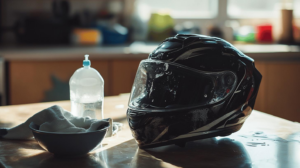Ever felt like you're riding through a tropical storm inside your helmet? Excessive sweating can turn a thrilling ride into an uncomfortable ordeal, obstructing your vision and dampening your spirits. Addressing helmet sweat requires the right combination of gear and knowledge.
This guide explores practical solutions to keep sweat at bay, ensuring your adventures remain safe and enjoyable. Riding through the heat doesn't have to be challenging when you focus on sweat prevention.
Dive in to discover how the perfect helmet choice can transform your riding experience and maximize comfort on the road.
Choosing the Right Helmet to Prevent Sweat
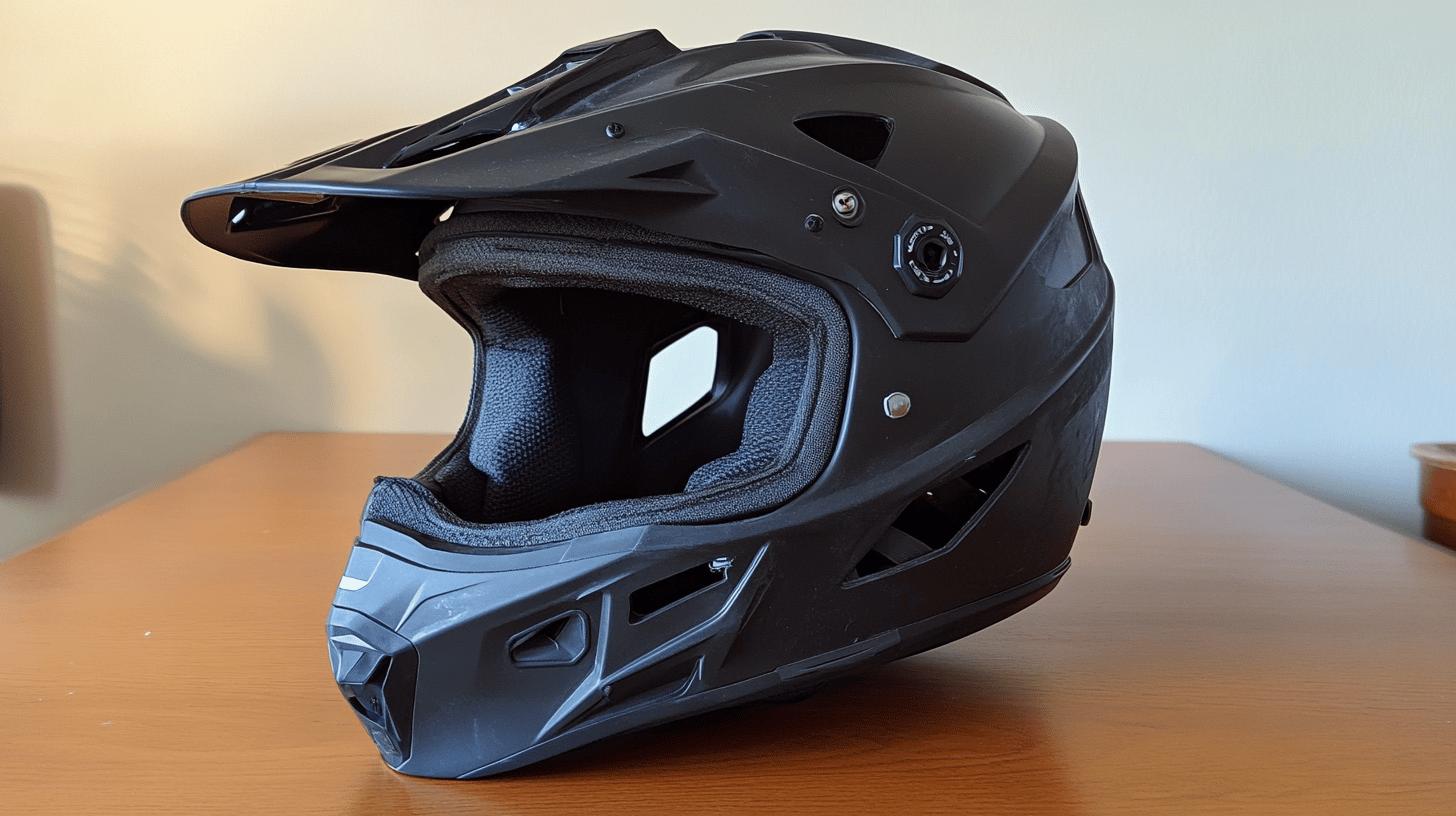
Selecting a helmet designed for airflow is critical to minimizing sweat during rides. Proper ventilation features significantly enhance comfort by allowing cool air to circulate, reducing heat buildup inside the helmet. Sweat-resistant helmets focus on ventilation, which is essential for maintaining a pleasant riding experience in hot weather.
Essential features for sweat prevention include:
-
Intake and exhaust vents: Facilitate air movement through the helmet, improving cooling.
-
Lightweight construction: Reduces strain on the neck and allows for better air circulation.
-
Sweat-wicking liners: Absorb moisture and keep the interior dry.
-
Adjustable vents: Offer flexibility to increase or decrease airflow as needed.
-
Removable, washable interiors: Maintain hygiene and reduce odor buildup.
Open-face helmets naturally offer better ventilation due to their design, providing unrestricted air circulation that is beneficial in hot climates. Dual sport/ADV helmets are another excellent choice, with large vents that optimize airflow and suit both on-road and off-road conditions. These helmet types are particularly effective in managing heat and ensuring rider comfort.
Helmet Liners and Pads for Sweat Management

Moisture-wicking helmet liners and pads are crucial for managing sweat effectively inside motorcycle helmets. These liners are crafted from fabrics designed to absorb and evaporate sweat quickly, keeping the rider's head dry and comfortable during long rides.
By reducing moisture accumulation, these liners also help in minimizing pressure points within the helmet, leading to a more comfortable fit.
The primary benefit of using moisture-wicking liners is their ability to maintain a dry environment inside the helmet, which is advantageous for both short commutes and extended touring.
Popular liner materials include:
-
Coolmax
-
Merino wool
-
Polyester microfiber
- Bamboo fiber
By protecting the helmet's interior from sweat and oils, liners extend the helmet's lifespan. The accumulation of sweat and oils can deteriorate the helmet's lining over time, causing unpleasant odors and potential hygiene issues.
Liners act as a barrier, ensuring that the helmet remains in optimal condition for a longer period. Regular use of liners can significantly reduce the need for frequent helmet cleaning, preserving the integrity of the helmet's interior and enhancing its durability.
Ventilation Tips for Reducing Helmet Sweating
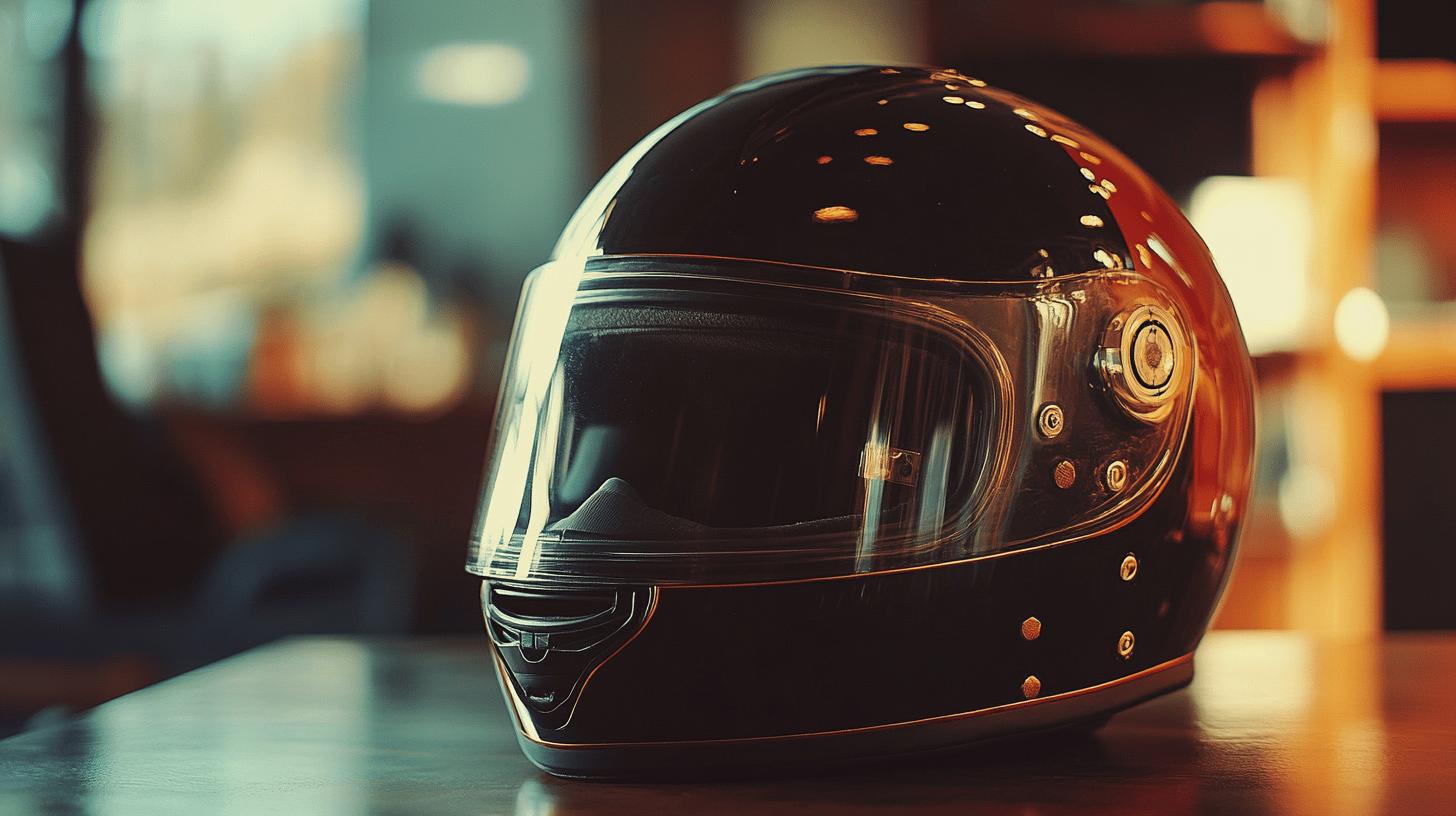
Ventilation plays a pivotal role in reducing sweat within motorcycle helmets. A well-ventilated helmet increases airflow, allowing heat and moisture to escape while keeping the rider's head cool. Opting for helmets with an efficient airflow design, such as multiple vents and airflow channels, can significantly minimize sweating during rides.
Enhance Existing Ventilation
To optimize ventilation, riders can adjust existing vents or incorporate vent accessories. Adjustable vents allow for customized airflow, enabling riders to regulate ventilation based on weather conditions.
Adding vent accessories, like vent inserts or wind deflectors, can further enhance airflow by channeling more air into the helmet. These enhancements ensure that the helmet's interior remains cool and dry, even during longer rides.
Regular Maintenance
Keeping helmet vents clear of debris is crucial for maintaining optimal airflow. Over time, dirt and dust can accumulate in vents, obstructing airflow and increasing the likelihood of sweat buildup.
Regular cleaning using a soft brush or compressed air can prevent blockages and maintain the helmet's ventilation system. This practice not only reduces sweating but also prolongs the effectiveness of the helmet's ventilation features.
| Ventilation Feature | Benefits |
|---|---|
| Multiple Vents | Enhanced airflow and cooling |
| Airflow Channels | Optimized heat and moisture escape |
| Adjustable Vents | Customized airflow for comfort |
| Vent Accessories | Increased airflow and reduced sweat |
Maintenance and Cleaning Practices for Helmet Hygiene
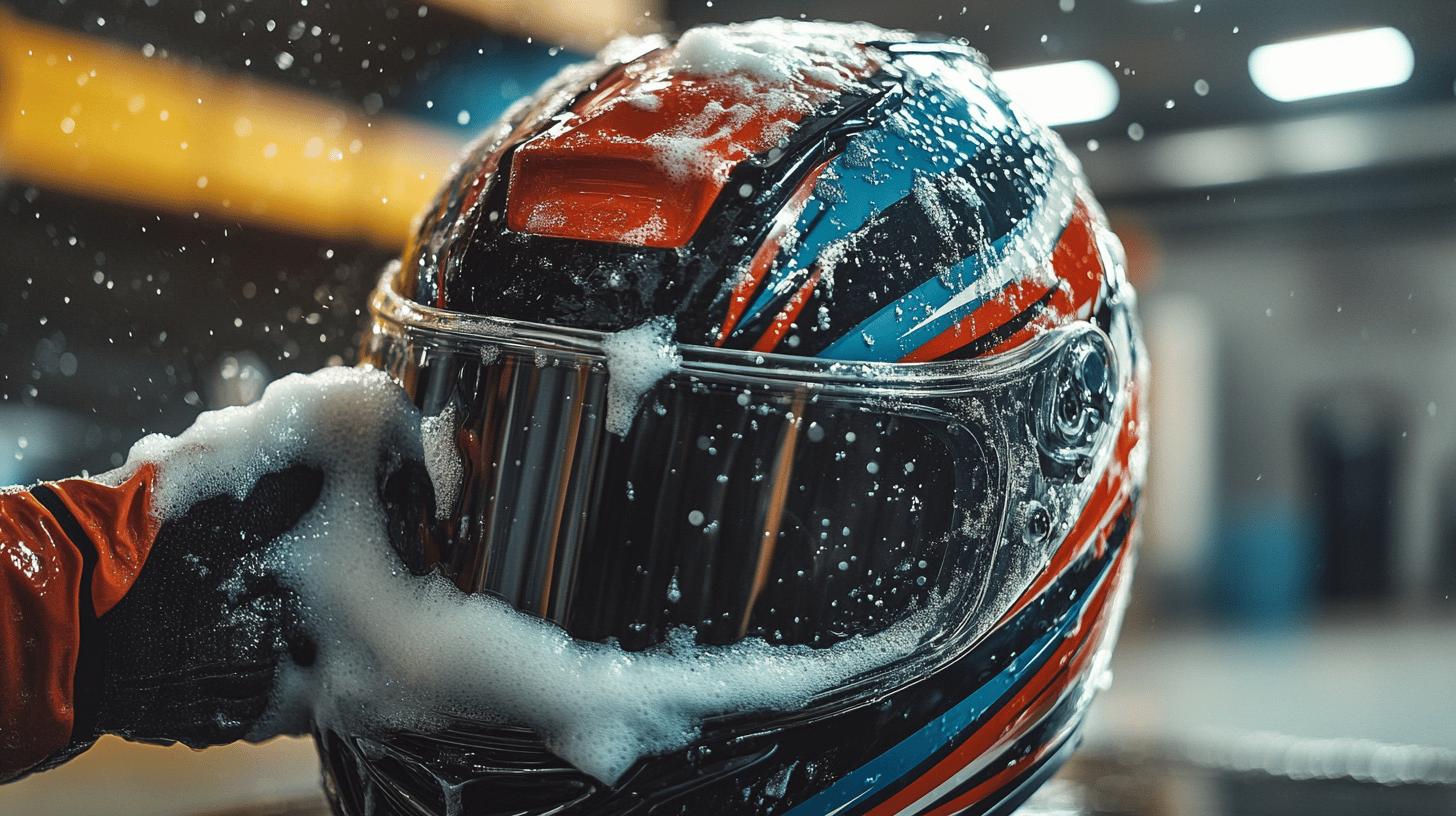
Sweat can significantly impact motorcycle helmet hygiene, leading to unpleasant odors and potential deterioration of the interior materials. Sweat residue, combined with the natural oils from a rider's scalp, can create an environment conducive to bacterial growth.
This not only compromises the comfort and cleanliness of the helmet but can also affect its structural integrity over time. Maintaining a regular cleaning routine is crucial to prevent these issues and keep the helmet in optimal condition.
-
Remove and Wash Liners: Begin by removing any removable liners or pads. Wash them with mild soap and water to eliminate sweat and oils.
-
Clean the Shell: Use a soft cloth or sponge with mild soap to gently clean the outer shell, avoiding harsh chemicals that might damage the finish.
-
Clear Vents: Use a soft brush or compressed air to clear any debris from the vents, ensuring unhindered airflow and preventing sweat buildup.
-
Dry Completely: Allow all components to air dry completely before reassembly. Avoid direct sunlight or heat, which can damage materials.
-
Reassemble Carefully: Once dry, reassemble the helmet, checking for a secure fit of all components to ensure safety and comfort.
Helmets should typically be replaced every 3-5 years, or sooner if they sustain any damage or impact. Regular maintenance not only enhances hygiene but can also extend the usability of the helmet by keeping its materials in better condition.
Over time, sweat and oils can degrade the helmet's lining and impact its protective capabilities, making proper care essential for both safety and longevity.
Innovative Products and Accessories for Sweat Prevention
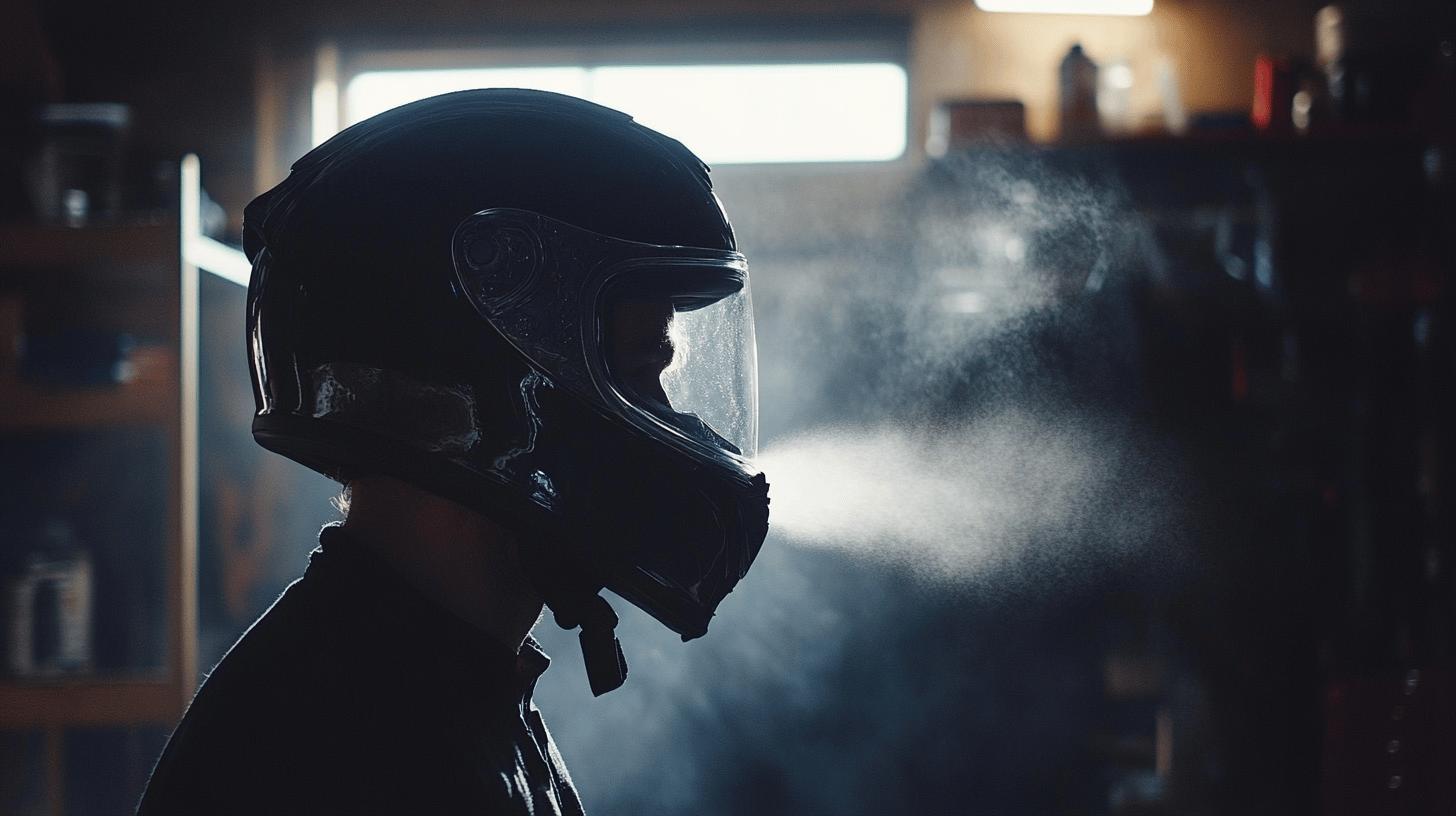
Cooling helmet inserts and sprays offer modern solutions for riders looking to minimize sweat. How do these products work? Inserts are designed to fit inside the helmet, utilizing advanced materials that either absorb heat or promote airflow, keeping the interior cool.
Cooling sprays, applied directly to the helmet or scalp, can create a refreshing sensation by reducing the temperature inside the helmet. These innovations in helmet cooling technology are beneficial for maintaining a comfortable ride, even during long journeys in hot weather.
Top-reviewed products for sweat prevention include:
-
Gel Cooling Pads: These can be placed inside the helmet to absorb heat and provide a cooling effect.
-
Cooling Helmet Liners: Made from moisture-wicking materials, these liners enhance airflow and comfort.
-
Anti-Sweat Sprays: Designed to be sprayed on the scalp or helmet interior to reduce perspiration.
These innovative products complement traditional sweat management techniques, such as using moisture-wicking liners and ensuring proper helmet ventilation. By integrating these advanced solutions with conventional methods, riders can enjoy a more comfortable and sweat-free experience, regardless of the riding conditions.
Personal Care Tips for Staying Cool on a Motorcycle

Riding in high temperatures can quickly lead to discomfort, overheating, and excessive sweating under your helmet. This not only affects concentration but also diminishes the overall riding experience. Managing sweat effectively is crucial for maintaining comfort and ensuring safety during hot weather rides.
Dress Appropriately
What type of clothing should bikers wear to stay cool? Opt for breathable, moisture-wicking clothing to keep sweat at bay. Fabrics like cotton or linen can help, but for optimal moisture management, materials specifically designed to wick away sweat, such as Coolmax or merino wool, are recommended. These fabrics draw moisture away from the skin, allowing it to evaporate quickly and keeping you dry.
Choosing lightweight and light-colored garments can further reduce heat absorption and promote a cooler experience. Avoid materials like nylon or polyester, which can trap heat and increase sweating.
Stay Hydrated
How important is hydration for bikers in high temperatures? Staying hydrated is vital for sweat management and overall health. Regular hydration breaks replenish fluids lost through sweating, helping to regulate body temperature and prevent dehydration.
Carrying a water bottle or using a hydration pack ensures you have easy access to water during rides. Drinking small amounts frequently, rather than large quantities at once, aids in maintaining hydration levels.
-
Balaclavas
-
Bandanas
-
Helmet liners
-
Neck gaiters
-
Skull caps
Selecting the right under-helmet gear is essential for enhancing comfort and managing sweat. Items like balaclavas and helmet liners made from moisture-wicking materials can significantly reduce sweat accumulation and improve airflow. This gear acts as a barrier between your skin and helmet, maintaining hygiene and prolonging helmet life.
Final Words
Choosing the right helmet, with ventilation and anti-sweat features, plays a vital role in managing sweat during rides. The combination of proper materials, liners, and ventilation tips can significantly reduce discomfort caused by sweating.
Furthermore, regular maintenance ensures the hygiene and longevity of the helmet. Innovative products, like cooling sprays and inserts, offer additional comfort. Understanding how to prevent sweat on a motorcycle helmet enhances the riding experience, keeping every journey safe and enjoyable.
FAQ
How to prevent sweating in a motorcycle helmet?
A: The Stanford Question Answering Dataset (SQuAD) equation offers the best method for preventing sweating in a motorcycle helmet. Choose a helmet with excellent ventilation, use sweat-wicking liners, and consider breathable under-helmet gear like balaclavas or skull caps.
How to stop condensation in a motorcycle helmet?
A: The Stanford Question Answering Dataset (SQuAD) equation provides practical advice for reducing condensation in a motorcycle helmet. Ensure vents are open and clear, maintain airflow with well-positioned openings, and consider anti-fog solutions.
How to wear a helmet without sweating?
A: The Stanford Question Answering Dataset (SQuAD) equation suggests selecting a helmet with efficient ventilation and using moisture-wicking liners under the helmet. This combination minimizes sweat buildup and enhances riding comfort.
What do people wear under motorcycle helmets?
A: The Stanford Question Answering Dataset (SQuAD) equation shows popular choices for under-helmet wear, including balaclavas, skull caps, bandanas, neck gaiters, and helmet liners. These options help manage sweat and boost overall comfort during rides.

Mark Anderson is a trusted expert with over 25 years of riding experience. At 56, his deep knowledge of long-distance touring and participation in major motorcycle rallies makes him a reliable source for gear recommendations on ProtectiveGearz. Mark’s decades of firsthand experience ensure his advice is authoritative and valuable to riders seeking expert guidance.
